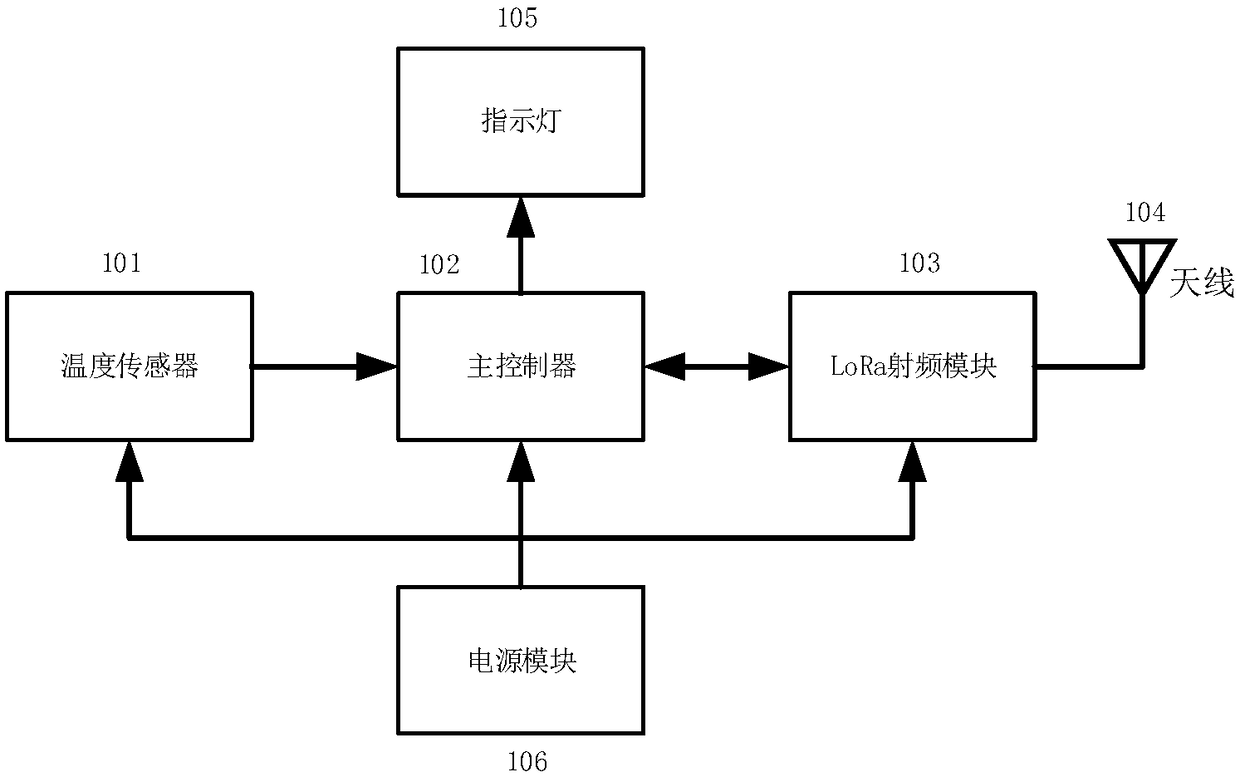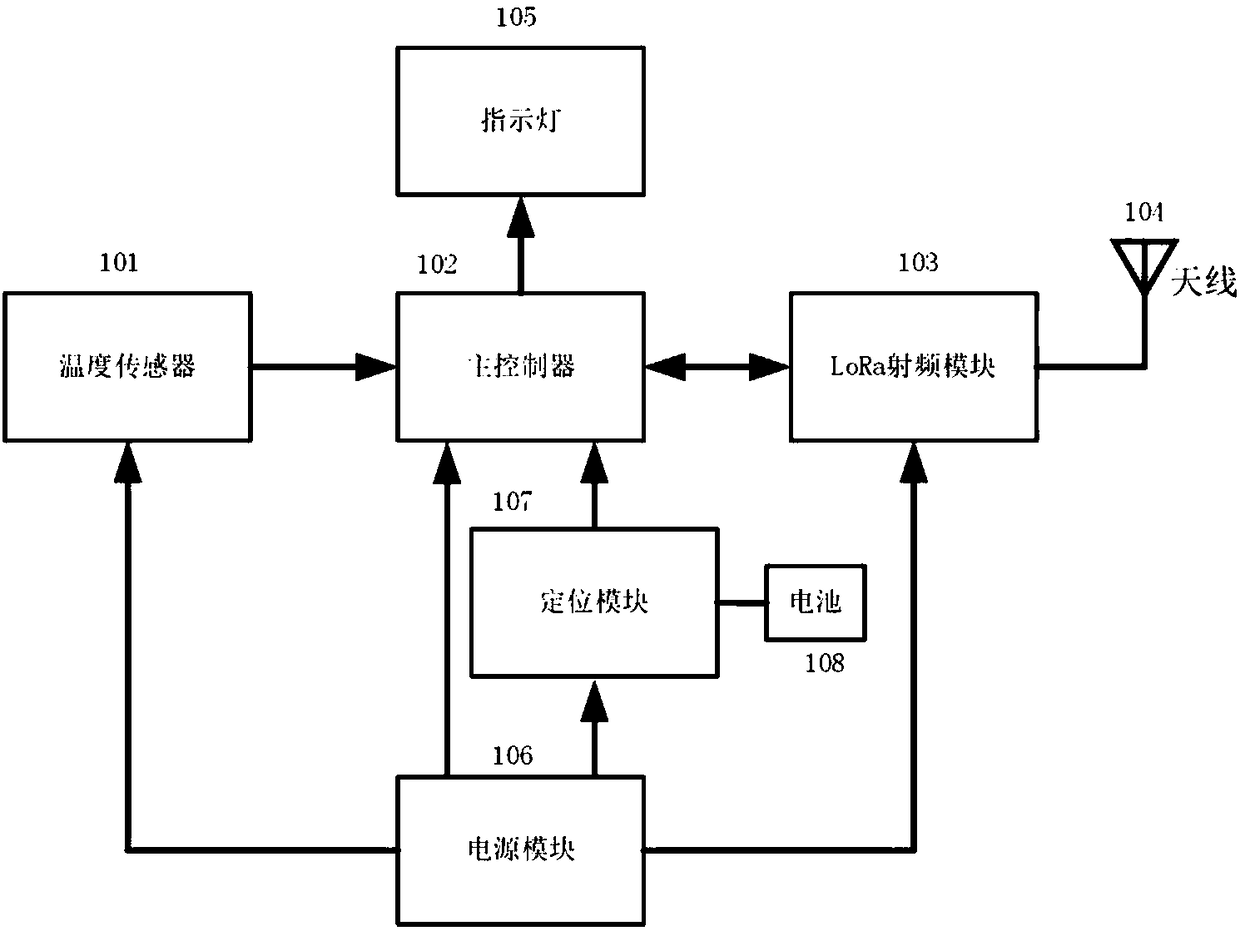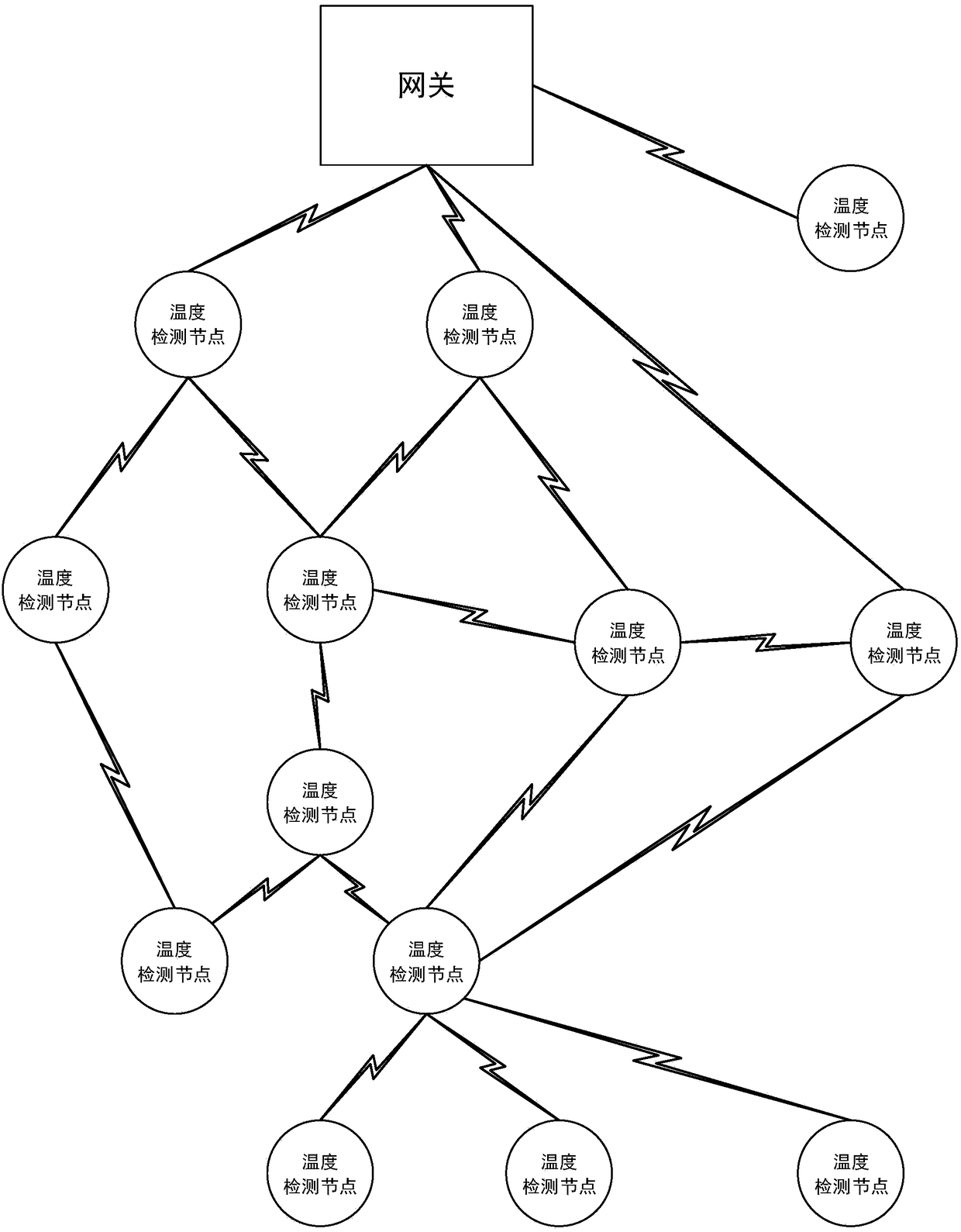Bus duct temperature acquisition device based on LoRa and Contiki system
A collection device and busway technology, applied in the direction of electric devices, thermometers and thermometers using electric/magnetic elements that are directly sensitive to heat, can solve the problems of reduced maintenance costs, weak diffraction ability, difficult wiring, etc., to achieve Reduce the difficulty of engineering installation, enhance the anti-interference ability, and reduce the effect of gateway layout
- Summary
- Abstract
- Description
- Claims
- Application Information
AI Technical Summary
Problems solved by technology
Method used
Image
Examples
Embodiment 1
[0029] Such as figure 1 As shown, a LoRa-based bus temperature acquisition device is composed of a temperature sensor 101 , a main controller 102 , a LoRa radio frequency module 103 , an antenna 104 , an indicator light 105 , and a power supply module 106 . Wherein the main controller 102 is connected with the LoRa radio frequency module 103 in two-way communication.
[0030] The temperature sensor 101 is responsible for transmitting the temperature information of the bus duct joint position to the main controller 102, and the main controller 102 processes the information sent by the temperature sensor 101, then transmits it to the LoRa radio frequency module 103, and sends it out through the antenna 104. When the main controller 102 processes the information sent by the temperature sensor 101 and finds that the temperature exceeds the preset threshold value, it will control the indicator light 105 to give an alarm. The power supply module 106 is responsible for supplying pow...
Embodiment 2
[0040] The bus duct temperature acquisition device based on the LoRa Internet of Things and Contiki system has a cloud server (not shown in the figure), which is used to receive and process temperature signals, wherein, the cloud server is provided with a temperature comparison module, which uses To store the temperature threshold value, and compare the detected temperature signal with the temperature threshold value, judge the degree of temperature exceeding, and generate a feedback signal. The difference between this embodiment and Embodiment 1 is that the main controller does not compare the detected temperatures, but the cloud server realizes the above functions, and other settings are the same as Embodiment 1.
[0041] Certainly also can carry out following deformation setting to present embodiment: described bus duct temperature acquisition device based on LoRa Internet of Things and Contiki system is set to movable portable equipment, can also comprise navigation positio...
PUM
 Login to View More
Login to View More Abstract
Description
Claims
Application Information
 Login to View More
Login to View More - R&D
- Intellectual Property
- Life Sciences
- Materials
- Tech Scout
- Unparalleled Data Quality
- Higher Quality Content
- 60% Fewer Hallucinations
Browse by: Latest US Patents, China's latest patents, Technical Efficacy Thesaurus, Application Domain, Technology Topic, Popular Technical Reports.
© 2025 PatSnap. All rights reserved.Legal|Privacy policy|Modern Slavery Act Transparency Statement|Sitemap|About US| Contact US: help@patsnap.com



